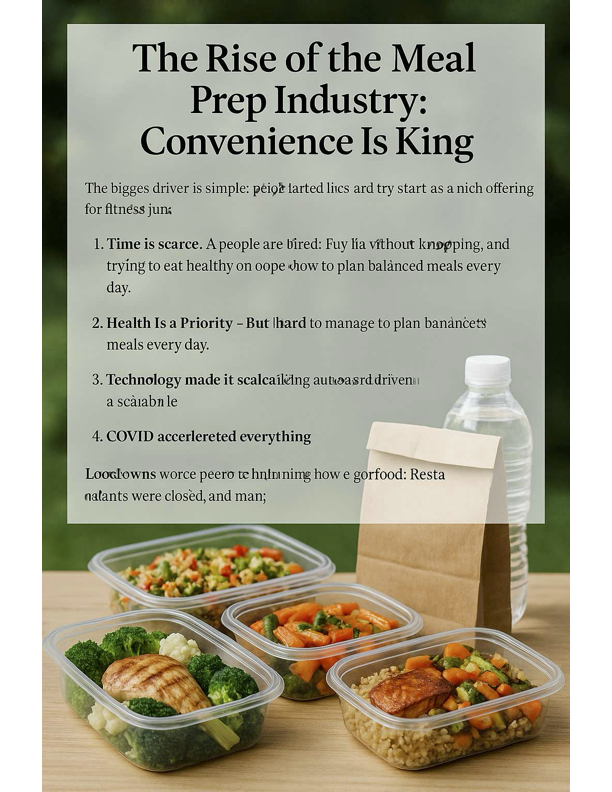In the last decade, the meal prep industry has exploded. What started as a niche offering for fitness junkies and time-strapped professionals is now a mainstream business model reshaping how we eat.
Let’s be clear: this isn’t just about pre-chopped veggies in plastic containers. The meal prep industry is a full-blown ecosystem—custom plans, nationwide delivery services, tech-driven personalization, and a growing fleet of ghost kitchens pumping out ready-to-heat meals.
So what’s behind the boom?
1. Time Is Scarce, and People Are Tired
The biggest driver is simple: people are busy. Cooking every night, shopping for groceries, and trying to eat healthy on top of work, kids, and life? It’s a lot. Meal prep companies offer a fix. Whether it’s a box of raw ingredients with a recipe or fully-cooked meals you just heat up, it saves time and mental energy.
2. Health Is a Priority—But Hard to Manage
More people care about what they eat, but few have the time or know-how to plan balanced meals every day. Meal prep services fill that gap with diet-specific options—keto, paleo, vegan, high-protein, low-carb, and everything in between. They take the guesswork out of eating clean.
3. Technology Made It Scalable
Apps, subscription models, and AI-powered personalization have turned meal prep into a data-driven machine. Customers input preferences, goals, allergies, and macros, and companies tailor meal plans accordingly. Some even track delivery logistics and temperature in real time. It’s food meets SaaS.
4. COVID Accelerated Everything
Lockdowns forced people to rethink how they got food. Restaurants were closed, and many avoided grocery stores. Meal kits and prepared meals saw massive spikes in demand. That momentum hasn’t slowed. Once people got used to the convenience, they didn’t want to go back.
5. Sustainability (Kind Of) Matters Now
Consumers are more eco-aware. Meal prep companies tout reduced food waste and locally sourced ingredients. The packaging? Still a challenge, but many are experimenting with compostables or reusables. It's not perfect, but the trend is heading in the right direction.
The Competitive Landscape
You’ve got the giants—HelloFresh, Blue Apron, Factor, Freshly, Trifecta—battling for national market share. But there’s also a booming local scene: niche services catering to regional tastes or specific dietary tribes. Think meal prep for athletes, diabetic-friendly meals, or culturally-specific cuisine.
Margins are tight, logistics are brutal, and customer retention is a constant challenge. But for the winners, the payoff is huge. The global meal kit delivery market alone is projected to hit over $20 billion by 2027.
What's Next?
Expect more personalization. Think DNA-based nutrition plans, AI-generated meal schedules, and smarter portioning. Also: tighter integration with fitness apps, wearables, and even employers offering meal prep as a wellness perk.
Ghost kitchens and vertical integration will also grow—companies owning the entire process from sourcing ingredients to cooking and delivery.
And yes, the robots are coming. Automated kitchens and drone deliveries aren’t sci-fi anymore. They’re beta-testing.
Final Thought
The meal prep industry isn’t just a food trend—it’s a fundamental shift in how people manage their time, health, and lifestyle. It's not about replacing home-cooked meals forever, but about giving people smarter choices when time and energy are running low.
Convenience isn’t just king. It’s the entire throne.

